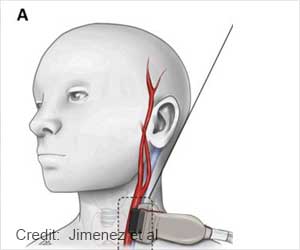In a new study it has been found that blood pressure control system is present in kidney's structural units known as nephrons.

Scientists at the University of Texas Health Science Center San Antonio have shed light on how this essential function of the distal nephron is regulated.
They demonstrated that sodium handling by the distal nephron is under the control of a local regulatory system.
Loss or dysfunction of this system leads to hypertension resulting from improper salt retention by the kidneys, the scientists found in mouse studies.
"These studies provide the first unequivocal evidence of a blood pressure control system in the distal nephron of the kidney," said senior author James Stockand.
"It turns out control of sodium re-absorption by this system is as important to normal blood pressure regulation as is a better-understood system, called the renin-angiotensin-aldosterone system, which works outside the kidney," said Stockand.
Advertisement












